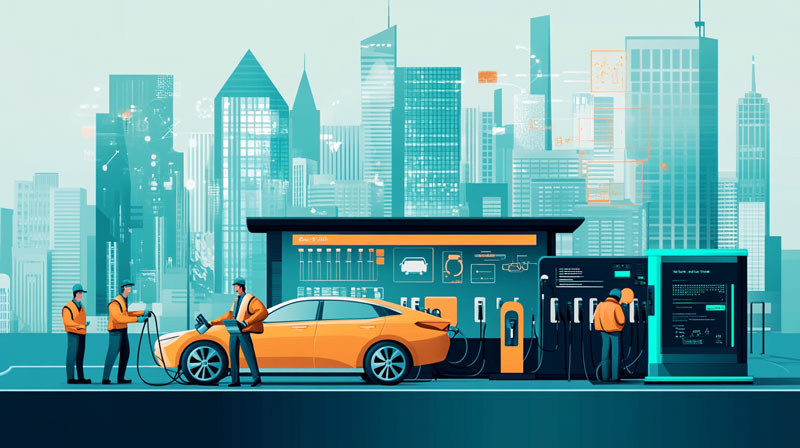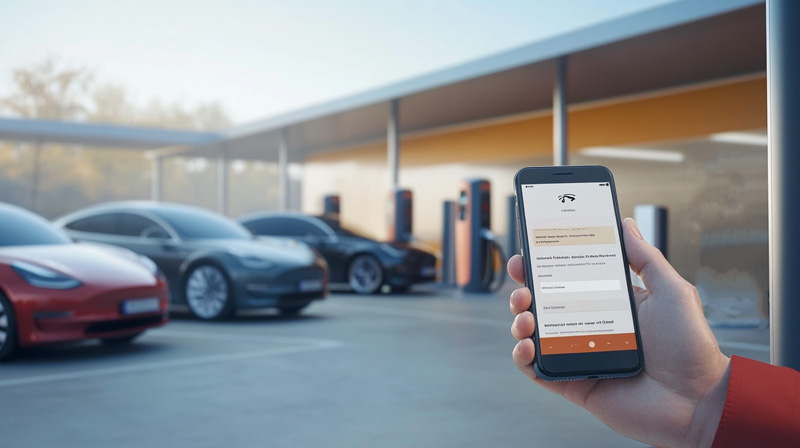1. Remote Monitoring: Real-Time Insights into Charger Status
For operators managing multi-site EV charger networks, remote monitoring is an essential tool. A real-time monitoring system enables operators to track the status of each charging station, including charger availability, power usage, and potential faults. For instance, in California, one charger network utilized remote monitoring technology to reduce fault response time by 30%, significantly boosting operational efficiency. This approach cuts the cost of manual inspections and ensures quick issue resolution, keeping chargers running smoothly.
• Customer Pain Point: Delayed detection of charger faults leads to user churn and revenue loss.
• Solution: Deploy a cloud-based remote monitoring system with integrated sensors and data analytics for real-time alerts and status updates.
2. Maintenance Scheduling: Proactive Management to Reduce Downtime
Charger hardware and software inevitably experience wear and tear, and frequent downtime can negatively impact user experience and revenue. Maintenance scheduling allows operators to stay proactive with preventive checks and regular upkeep. In New York, one charger network implemented an intelligent maintenance scheduling system that automatically assigns technicians for equipment inspections, cutting maintenance costs by 20% and minimizing equipment failure rates.
• Customer Needs: Frequent equipment failures, high maintenance costs, and inefficient manual scheduling.
• Resolution: Use automated maintenance scheduling tools that predict potential faults based on equipment data and schedule proactive maintenance.
3. User Experience Optimization: Boosting Satisfaction and Loyalty
For EV users, the ease of the charging process directly shapes their perception of the charger network. Optimizing user experience can be achieved through intuitive interfaces, convenient payment options, and real-time charging status updates. In Texas, one charger network launched a mobile app that lets users remotely check charger availability and reserve charging times, leading to a 25% increase in user satisfaction.
• Challenges: High charger occupancy, long wait times, and complicated payment processes.
• Approach: Develop a user-friendly mobile app with online payment and reservation features, and install clear signage at stations.
4. Data Analytics: Driving Smart Operational Decisions
Managing multi-site EV charger networks requires data-driven insights. By analyzing usage data, operators can understand user behavior, peak charging times, and power demand trends. In Florida, one charger network used data analytics to identify that weekend afternoons were peak charging times, prompting adjustments in power procurement that reduced operational costs by 15%.
• User Frustrations: Lack of data makes it difficult to optimize resource allocation and reduce costs.
• Proposal: Implement a data analytics platform to collect charger usage data and generate visual reports for informed decision-making.
5. Integrated Management Platform: A One-Stop Solution
Efficiently managing multi-site EV charger networks often requires more than a single tool. An integrated management platform combines remote monitoring, maintenance scheduling, user management, and data analytics into one system, providing comprehensive operational support. In the U.S., a leading charger network improved overall operational efficiency by 40% and significantly reduced management complexity by adopting such a platform.
• Concerns:Operating multiple systems is complex and inefficient.
•Strategy:Use an integrated management platform for seamless multi-function coordination and improved management transparency.
Conclusion
If you’re looking to improve the operational efficiency of your multi-site EV charger network, Elikpower offers a customized integrated management platform that combines advanced remote monitoring and data analytics. Contact us today for a free consultation and learn how to make your charger network more efficient and competitive!
Post time: Mar-26-2025


